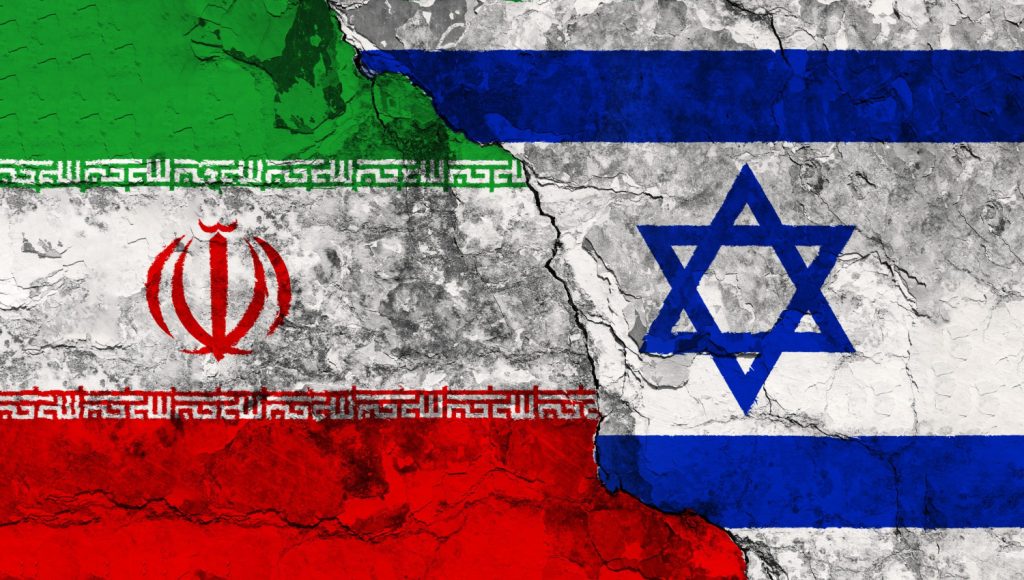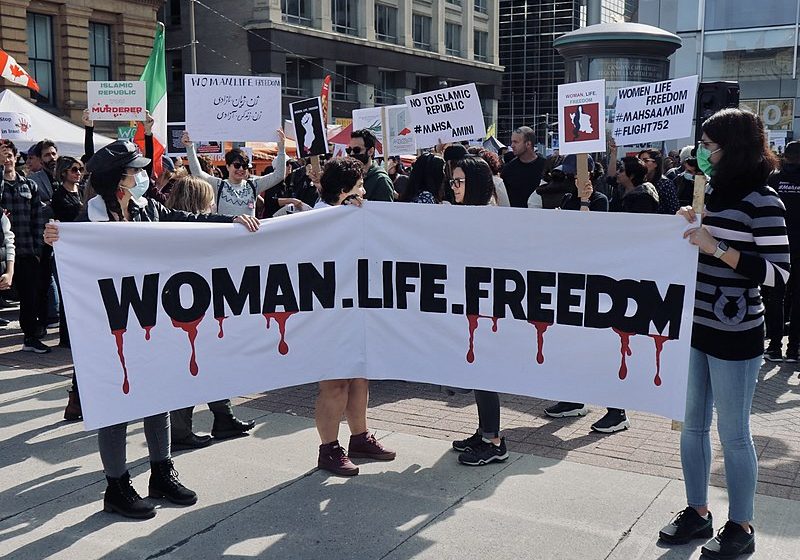Australia/Israel Review, Featured
Editorial: Iran escalates its multi-front war with Israel
May 1, 2023 | Colin Rubenstein

As the modern State of Israel celebrated the 75th anniversary of its establishment – and its subsequent amazing development as a Jewish state – there has been a concerted escalation in attacks and provocations by Iran and its proxies. If this continues, it risks sparking a multifront, regional war of a magnitude not seen in decades.
The Wall Street Journal (April 14) reported that recent attacks on Israel from Gaza, Lebanon and Syria were deliberately orchestrated by Esmail Qaani, the leader of the Islamic Revolutionary Guard Corps’ (IRGC) elite Quds Force, who held a series of clandestine meetings with the leaders of Iran’s proxies across the region, demanding a coordinated, multifront assault on the Jewish state.
The unusual character of the attacks Israel has been facing, with coordination between Palestinian terror groups including Hamas and Palestinian Islamic Jihad (PIJ), represents a significant tactical shift by Teheran that could change the face of the Israel-Iran conflict which has been a key aspect of Middle East politics for decades.
For instance, in March, a terrorist infiltrator from southern Lebanon remotely detonated a powerful and sophisticated roadside bomb at Megiddo, 70 km inside Israeli territory, severely wounding a passing motorist in an attack that potentially could have killed many.
In early April, Hamas fired rockets into Israel from Gaza, in itself nothing new, but this was joined by a barrage of 34 rockets launched into northern Israel by its operatives in southern Lebanon.
This was almost certainly done with the prior knowledge and consent of Iran’s proxy Hezbollah, which has dominated south Lebanon for years and illegally stocked its towns and villages with what is estimated to be more than 150,000 short and long-range rockets and missiles aimed at Israel.
April also saw both rocket strikes and a drone attack on Israel’s Golan Heights, most likely from Hezbollah positions in Syria.
“This is the modus operandi of Iran,” Maj. Gen (Ret.) Yaakov Amidror, former head of Israel’s National Security Council, recently told Israeli radio.
“This is how they increase the pressure on Israel – by turning the screws on several borders at once. And so, we find ourselves in a very different place from where we were even just half a year ago.
Understanding why this reckless and dangerous shift is happening now requires some insight into the Islamist regime’s game plan for bringing about Israel’s demise.
According to Teheran’s “resistance doctrine”, Iran views Israel as an inherently weak society that can be brought to the breaking point through unrelenting military pressure.
Lebanon’s Hezbollah has been the primary instrument for exerting that pressure, although Iran also substantially funds, arms and trains Hamas and PIJ.
In addition, as the Palestinian Authority in the West Bank continues to weaken under increasingly ineffectual ageing and corrupt leadership, Iran and its proxies are also constantly looking for ways to expand their growing influence and capabilities there.
Many Israeli analysts believe that Iran’s leaders have misread the implications of the massive, impassioned demonstrations that have swept Israel regarding the Government’s controversial judicial reform legislation.
Apparently, Iranian decision-makers misguidedly believe that the crucial tipping point is at hand. Iran is showing signs of throwing caution to the wind, testing the limits of Israeli restraint and taking aggressive gambles it had avoided in the past.
Amidst its fanciful delusions, the Iranian leadership has apparently failed to understand the significance of the seas of Israeli flags that have become the visible theme and symbol of the protest movement – representing the attachment, love and patriotism the individual Israeli demonstrators feel towards their state.
One can speculate Iran’s leaders may be projecting from their own experience – seeing the demonstrations in Israel in the same light as the recent months of anti-Government protests on their own streets, which did pose a real threat to their brutal regime. Such a comparison, of course, is obviously nonsensical.
Iranian protesters yearn for democracy and basic freedoms they have never had and risk mass arrest or even their lives by demonstrating, while Israeli demonstrators are themselves exercising the freedoms they’ve always had to protest and pressure their representatives – a legitimate part of the democratic process of pluralistic negotiation and consensus-building.
Yet on top of the rising tensions sparked by the IRGC’s misguided new aggressiveness, Iran also remains poised on the verge of a breakout to nuclear weapons capability, adding daily to its stockpile of highly enriched uranium and advancing development of the technology to build both nuclear warheads and the ballistic missiles to carry them.
In an ominous development likely spurred on by the US’s continued policy of steady disengagement from the Middle East, Iran also recently restored ties with Saudi Arabia in a deal brokered by China.
This shifting sand under the feet of all the major players in the Middle East only drives home the importance for the international community to increase pressure on Iran to permanently and reliably dismantle its illegal nuclear weapons program. Obviously, Iran’s aggressive and provocative behaviour today would worsen drastically if it were operating under a nuclear shield. This would massively magnify global proliferation and instability and greatly endanger the interests of the community of free nations, including Australia’s.
Through its nuclear program and its new campaign of multifront aggression against Israel, Iran is taking the world down a dangerous path. Many Israeli and Western strategic analysts consider a major, highly destructive regional war between Israel and Iran all but inevitable within the next few years unless much more is done to contain Iran’s illegal and aggressive actions. Iran’s open pursuit of a multifront campaign directed at the Jewish state brings such an outcome much closer.
If the international community wants to avoid the destruction, instability and global uncertainty such a major Middle East conflict would entail, it has very little time left to find a better approach to short-circuiting Iran’s massive aggression and sprint toward nuclear weapons capabilities.
Tags: Iran, IRGC, Israel, Middle East






